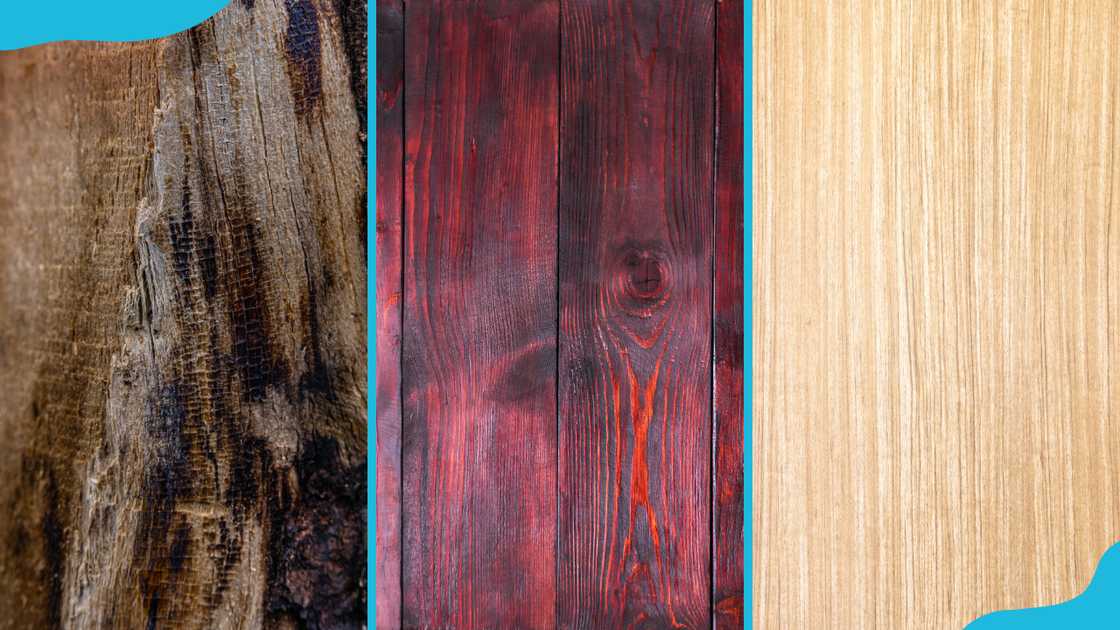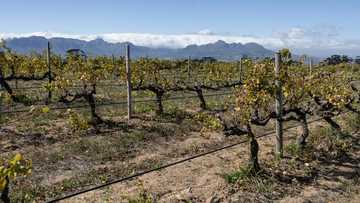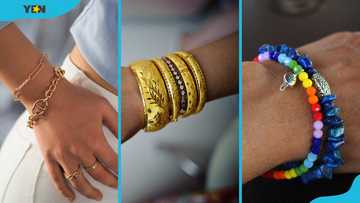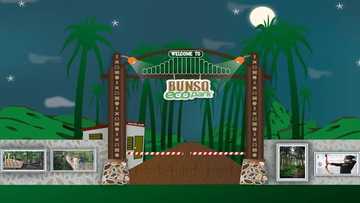The different types of wood for furniture: Ultimate guide to choose the best wood for your furniture
There are various types of furniture available in stores and showrooms. Choosing a piece that appeals to you is easy, but identifying a quality piece is something that most consumers need help with. Discover the different types of wood for furniture.

Source: Getty Images
TABLE OF CONTENTS
The different types of wood for furniture offer a variety of choices to consumers. The varying wood types provide many options, from quality to price and availability. But if you are a consumer looking for the best wood for your furniture, which one should you choose?
Different types of wood for furniture
Which type of wood is best for furniture? Hardwood is the best type of furniture as it offers durability, strength and resistance to wear and tear. However, depending on preference and budget, you can use other options like softwood and engineered wood.
Below is the ultimate guide to the different types of wood categorised into hardwood, softwood, and engineered wood.
Types of hardwood

Source: Getty Images
Hardwood is one of the best types of wood for furniture. You can differentiate hardwood by its slow growth, broad leaves, dense grain, low sap content, weight and density and good resistance to fire.
Oak
Oak wood is dense, heavy, hard-wearing, and resistant to stains and scratches, making it ideal for furniture making. It is relatively abundant and has an attractive, open grain. The main types of oak wood include red oak and white oak.
Walnut
Walnut is a dense, intense, expensive timber celebrated for its rich, dark colour and attractive grain pattern. It is also shock-resistant, stable, strong, and beautiful. Walnut polishes well; its colours range from creamy white and pale brown to dark chocolate brown with dark brown streaks.
However, walnuts are among the most expensive timbers, primarily found in high-end furniture. You can also use it to make carvings, cupboards, wood veneers and musical instruments like guitars and violins.
Rosewood
Rosewood is brownish-red premium timber from trees of the genus Dalbergia. Rosewood trees are native to Brazil, Jamaica, Africa, and India. All rosewoods are strong and heavy, taking an excellent polish. Products made from rosewood include guitars, marimbas, recorders, turnery, handles, furniture, and luxury flooring.
Mango wood
Mango wood, derived from the Mango tree, is an affordable and sustainable wood structure. Among mango wood's characteristics is its dense grains, which make it look elegant when used to craft furniture. The consistency of hues and timber texture also makes it an excellent choice for carved or distressed finish furniture.
Mahogany
Mahogany is a straight-grained, reddish-brown timber widely prized for its beauty, durability and colour. It has a reddish-brown tint that beautifully darkens with time and has a straight, delicate, even grain pattern.
Acacia
Acacia is a highly durable wood with high density and hardness. It has a straight, coarse grain with a fine texture with a light yellowish-brown colour that darkens over time. Acacia is slightly more solid than many common hardwoods, perfect for heavy-use furniture such as dining tables and benches.
Teak
Teak wood is a dense, close-grained hardwood from the Tectona grandis tree, native to south and southeast Asia. It produces stylish, luxurious, and long-lasting but expensive wood. Teak wood's brown tint gives it a rustic, aristocratic look.
Mindi
Mindi wood, also known as white cedar or white lauan, comes from the fast-growing Mindi tree native to India and Southeast Asia. Mindi is naturally resistant to decay and fungi and has yellowish and brown streaks, making it an ideal choice for chests and trunks.
Cherry wood
Cherrywood is a dense, durable, and strong hardwood commonly found in the Midwest and Eastern America. The timber is creamy white to reddish-brown, turning deeper with ageing. Cherrywood produces premium cabinets, dressers, and TV stands.
Maple wood
Maple wood, characterised by a straight lumber grain, is durable, solid and long-lasting. It has two variations of hard maple and soft maple harvested from dicot trees. Maple wood is ideal for heavy-duty flooring.
Birch
Birchwood is a cost-effective hardwood commonly found in northern America. Its colour varies from pale white to reddish-brown and yellow. Birch wood's texture and colour make it a perfect choice for wooden flooring.
Types of softwood

Source: Getty Images
Softwood is one of the most popular types of wood for furniture due to its availability and price. Its other advantages include its fast growth rate and its lightweight. However, softwood has various drawbacks, such as having poor fire resistance.
Redwood
Redwood timber is ideal for flooring and furniture due to its softness and affordability. In addition, because of its moisture resistance, redwood is common for outdoor projects.
Cedarwood
Cedar wood comes from Cedar trees and is often used for construction and furniture making as it is durable, easy to work with and moderately priced. It's easy to work with, features natural oils that protect it from decay and insect infestations and is readily available in many areas.
Western red cedar, distinguished by its red colour, is one of the most common types of softwoods in furniture-making.
Pinewood
Pinewood, derived from pine trees, is renowned for its light colour, straight grain, and remarkable durability. It is also inexpensive and grows faster than hardwoods; hence, pinewood is abundant.
Spruce wood
Spruce wood is generally suitable for making beds, tables, shelves and cupboards. It is very ideal for indoor use, even without treatment. However, it is weatherproof only if kept up or shielded.
Fir wood
Fir is a fast-growing, lightweight, naturally decay and insect-resistant timber for construction and furniture making. Fir lumber is relatively inexpensive, but its furniture pieces are heavier, thus challenging to move. It's also a popular choice for window and door trimmings due to its strength.
Types of engineered wood

Source: Getty Images
Engineered wood or mass timber is manufactured by binding or fixing the fibres, strands, veneers or boards of wood with adhesives to form a composite material. It is affordable but susceptible to water damage and thus requires more care.
Plywood
Plywood is manufactured from sheets of cross-laminated veneer and bonded under heat and pressure with durable, moisture-resistant adhesives. It is light, not easy to sculpt, and not very durable compared to hardwood.
Oriented Strand Board (OSB)
OSB is a combination of rectangular-shaped strands of wood oriented lengthwise and then arranged in layers, laid up into mats, and bonded with the help of an adhesive. They tend to expand and contract with moisture, and that can cause the material to buckle if used on floors instead of reliable solid wood.
Medium Density Fiberboard (MDF)
MDF is made by breaking down hardwood and softwood into fibres and combining them with wax and resin to create a rigid panel by applying heat and pressure. It is ideal for furniture, cabinetry, flooring and even speaker boxes due to its smooth finish, machinability, strength and consistency.
However, MDF is heavier and cannot hold too much weight. It also soaks up water and swells, cannot be stained and is vulnerable to extreme heat.
Cross-laminated timber (CLT)
CLT consists of planks (or lamellas) of sawn, glued, and layered wood, where each layer is oriented perpendicular to the previous. It is affordable and ideal for large floor, roof, and wall elements due to its strength, appearance, and versatility.
Composite board
Composite board is a wood engineered with both plastic content and wood fibre that has been extruded and heated. While they often cost more than wood, composite materials promise durability and less maintenance. It is also eco-friendly but slightly tricky to maintain.
Laminated veneer lumber (LVL)
Laminated veneer lumber uses multiple layers of thin wood assembled with glue and resin. LVL examples are headers, beams, rimboard, and edge-forming material. Due to LVL being a factory product, its material is stronger and more uniform.
Laminated strand lumber (LSL)
LSL comprises dried and graded wood veneers, strands or flakes that are layered upon one another and bonded with a moisture-resistant adhesive into large blocks known as billets. LSL suits headers and beams, tall wall studs, rim boards, sill plates, millwork and window framing.
What is the most common wood used in furniture?
According to Rapport Furniture, maple, oak, pine, and beech are the four most popular woods for furniture. However, many factors, like daily usage and indoor and outdoor use, are matters of consideration.
What wood is the most cheap furniture made of?
According to Q-Furniture, particleboard, plywood, MDF (medium-density fiberboard), laminate, and veneer are some of the materials used in cheap furniture.
There are different types of wood for furniture to choose from. They include wood species like Teak, Maple, Mahogany, Oak, Birch, and Walnut. The list above contains all the best wood types for your furniture.
Yen.com.gh recently published an informative article on how to read a tape measure in inches and centimetres. The tape measure is one of the most assumed measuring tools worldwide. Everybody believes that reading one is straightforward.
Learning how to read a tape measure requires knowledge about the meanings of the various markings on the tool. It also requires knowledge about the different measuring units. What else is needed to read a tape measure correctly?
Source: YEN.com.gh









